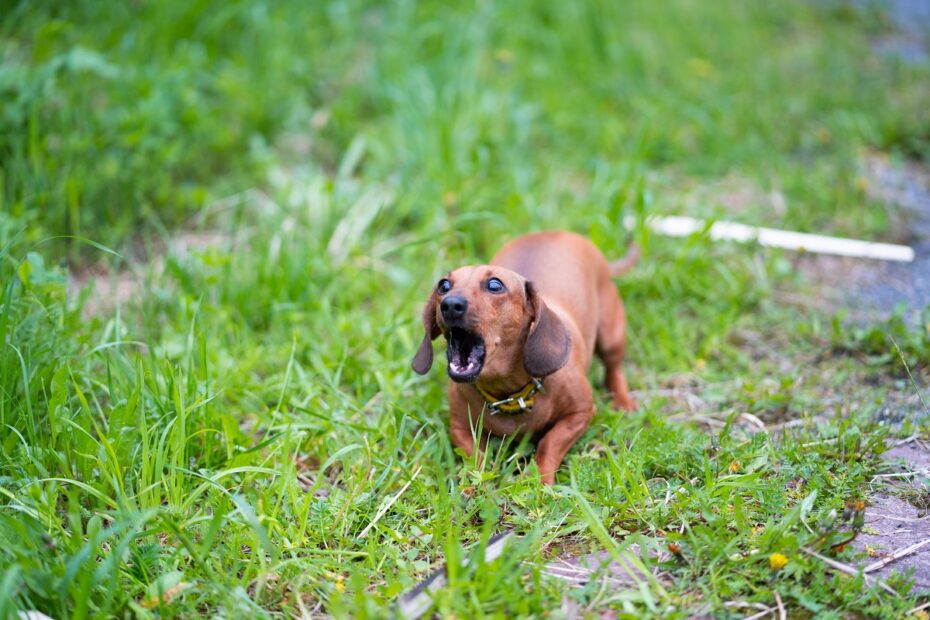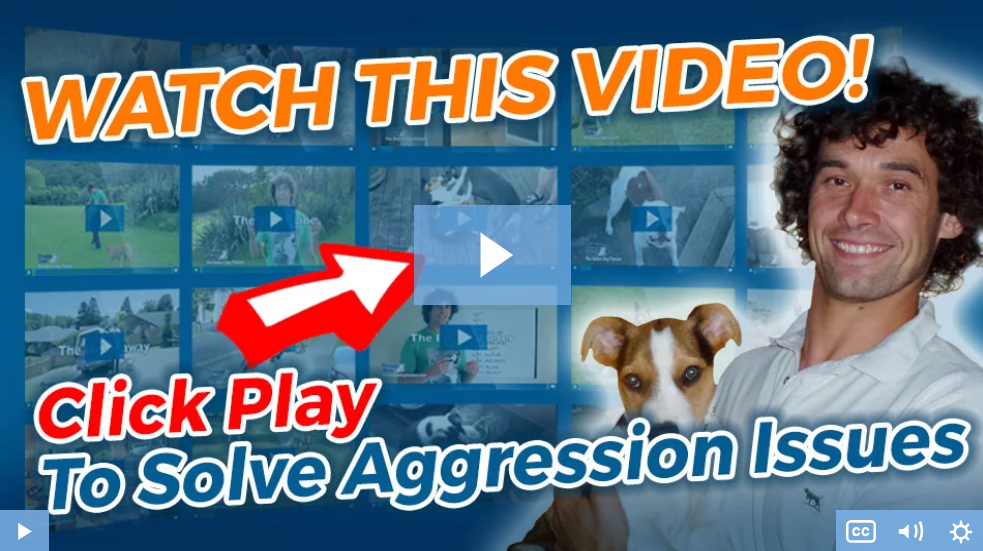“Why is my dog being aggressive all of a sudden? …if you’re asking yourself the same question then this is the most important page you’re ever going to read.
Let’s face facts… sudden aggression in dogs can be frightening.
Every dog has the occasional ‘off’ day, but in general, their personality and temperaments are pretty constant.
So, if your previously calm and easygoing companion suddenly starts losing their temper at people or other animals, it’s important to intervene early so the situation doesn’t escalate into something more serious.
Left unchecked, a minor problem can quickly develop into a major one, leaving you, your family, and others at risk.
The first step to dealing with aggression? …work out its cause.
The sooner you can figure out what’s making your dog act out, the sooner you can address it.
For now, handle your dog with care. Avoid any triggers and keep their environment as comfortable and controlled as possible. Once you figure out what’s causing the aggression, you can then work towards a safe solution.
We’ll look at some of the common causes of sudden aggression shortly. In the meantime, I’d highly recommend checking out the Dog Calming Code from Dan Abdelnoor over at The Online Dog Trainer. (see video below)
By encouraging your dog to exercise control over their emotions, the simple training Dan demonstrates will quickly help calm your dog and improve their focus.
So watch the video, implement the training into your dog’s routine, you should soon start noticing a marked improvement in your dog’s behavior.
Here’s the link to take a look: Click Here To Discover How To Finally Stop Your Dogs Unprovoked Aggression… Even If You’ve Tried & Failed Before
(video will open in a new window)
Why Is My Dog Being Aggressive All Of A Sudden?
Before you can address your dog’s aggression, you need to figure out its root cause.
Consider the overall picture.
- What triggers the aggression?
- Do they only behave aggressively in certain situations or towards certain people?
- Have there been any changes in their routine?
- Has your home environment changed recently?
- Is their aggression accompanied by any signs of illness or distress?
As you’re considering the overall picture, think about the following common causes of aggression.
Do any of them tie in with your dog’s behavior?
Medical Problems
If your dog’s aggression has come out of the blue, a medical problem might be to blame. It’s especially common in older dogs, but younger dogs can be affected too.
If your dog has started losing weight, is experiencing hair loss, and seems more lethargic than usual, their aggression might be rooted in hypothyroidism.
If their mood seems to change rapidly or if the aggression is accompanied by convulsions, they could be suffering from seizures.
Ear infections might be to blame if your dog’s aggression is triggered by loud noises.
If they lose their temper while eating or chewing, they may have a dental problem.
Other health complaints that can lead to sudden aggression include brain tumors, vision loss, injury, neurological disorders, and cognitive decline.
Fear
Aggression often has its root in fear. If an otherwise placid dog suddenly becomes aggressive, they might be reacting to something that they see as a threat.
In these cases, it’s important to figure out what triggered the reaction. Once you know what caused it, you can take avoidance measures while you work on tackling the problem with behavioral modification techniques like desensitization and counterconditioning.
Related Post: How To Calm An Aggressive Dog – Simple Tips For Aggressive Behavior

Adolescence
When a dog hits puberty, expect to see some changes in temperament.
Adolescent dogs, like adolescent kids, are bundles of raging hormones. Even the most easygoing and laid-back puppy can become unpredictable and moody in its teens.
They can take offense at the tiniest of things, start to see other dogs as competition, and even take out their frustrations on their nearest and dearest.
To make matters worse, adolescence is the time that dogs that are genetically predisposed to aggression start to feel their DNA kick in.
The problem is usually seen in intact dogs, but even neutered and spayed dogs can experience physical and psychological changes at this stage.
Lack of Socialization
Unfamiliar faces or situations can be challenging to dogs that have never been properly socialized.
If your dog hasn’t been taught how to behave around different dogs, people, and places as a puppy, they may react aggressively as adults.
Redirected Aggression
Redirected aggression is a common problem. If a dog can’t get to the source of its frustration, it may turn its aggression towards the nearest available target.
For example, if you intervene in a dog fight, your dog may redirect its aggression at the other dog onto you.
Similarly, dogs that are startled by a loud noise or frightened by a stranger will often vent their frustration on the nearest family member.
Lack of Stimulation
Dogs need physical exercise to be happy.
A small dog might be happy with a short walk on the leash, but dogs with higher activity requirements will need more outlets for their energy.
If they don’t get plenty of opportunities to burn off some steam, they’re likely to get bored, destructive, and prone to taking their frustrations out on their family.
While we’re on the subject of exercise, don’t underestimate the importance of brain workouts. An enriching mental life is just as important as an enriching physical one.
Leave your dog with nothing to occupy their time with, and they’re unlikely to thank you.
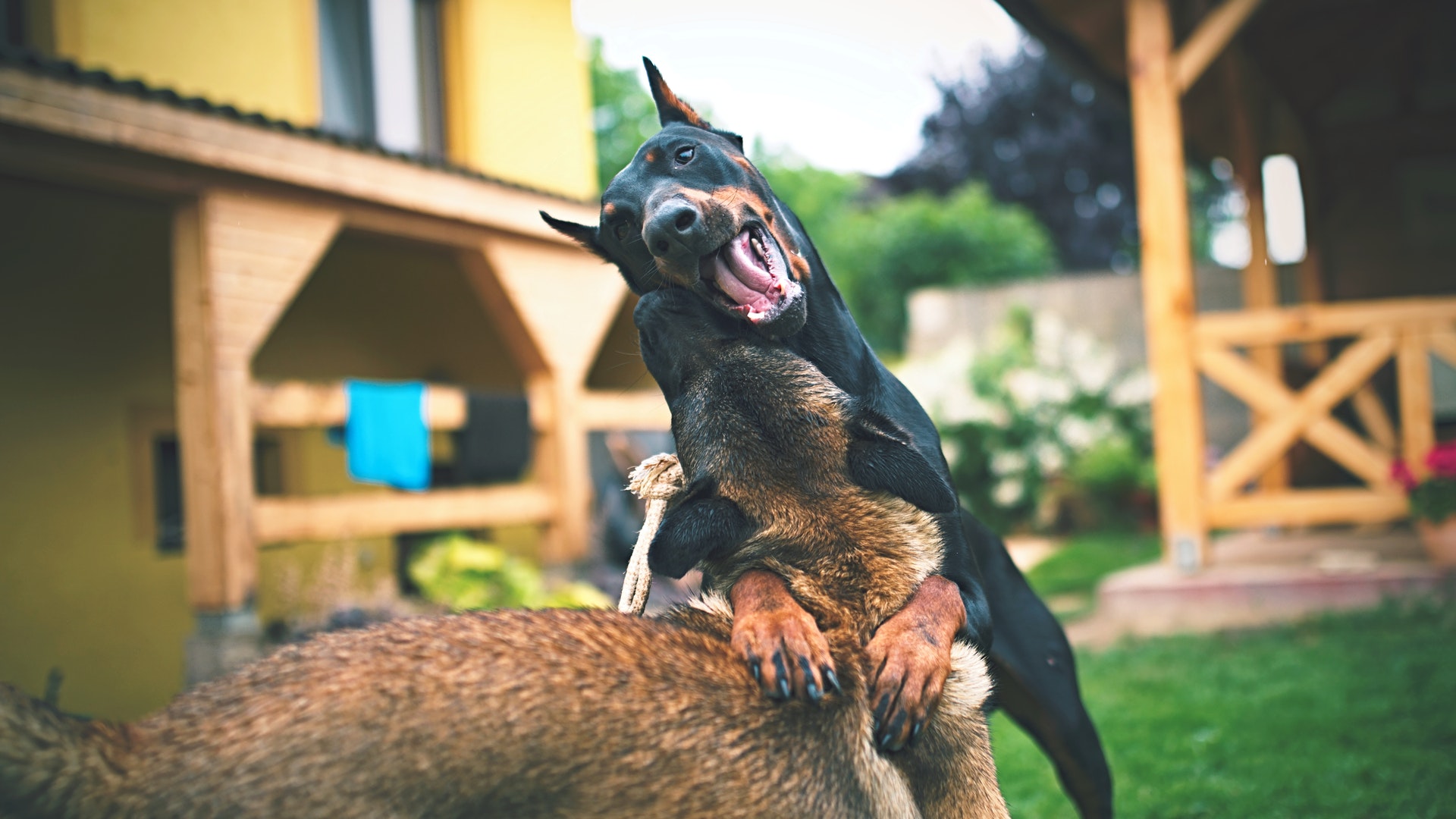
Dominance
Like most animals that live in social groups, dogs work within a dominant hierarchy. The hierarchy serves a valuable purpose: it maintains order, reduces conflict, and promotes cooperation.
Dogs will usually work out where they fall in the hierarchy quickly enough. Once they do, the dominant dogs control access to things like food, toys, resting places, and attention.
Most dogs will naturally assume either a neutral or submissive approach to people…. but not always.
A dog with the inclination to challenge its owner for dominance can bark, growl, snap and display other forms of aggression.
Change in Routine
Dogs like routine. If you make any changes to their schedule or environment without their prior written approval. You can expect some major temper tantrums.
Anything that impacts their sense of security (a new baby or pet, moving house, a change in your work schedule, etc.) can throw them off balance.
If they feel stressed, anxious, and unsure about what’s happening, they might start lashing out in frustration.
Resource Guarding
To a dog, things like food, toys, bones, and chews are hugely valuable. If they feel someone is intent on taking away their prized possessions, they’ll do what it takes to stop them.
Left unchecked, resource guarding can rapidly develop into a serious problem.
Territorialism
Even the sweetest natured dog can sometimes display strong territorial instincts. If an ‘intruder’ dares to invade their home turf, they’re liable to get extremely possessive and protective.
Once the unwelcome visitor leaves, your dog will go back to its placid ways. But until then, expect a very unattractive display of barking, snapping, and lunging.
Related Post: How To Socialize An Aggressive Dog – A Step By Step Guide
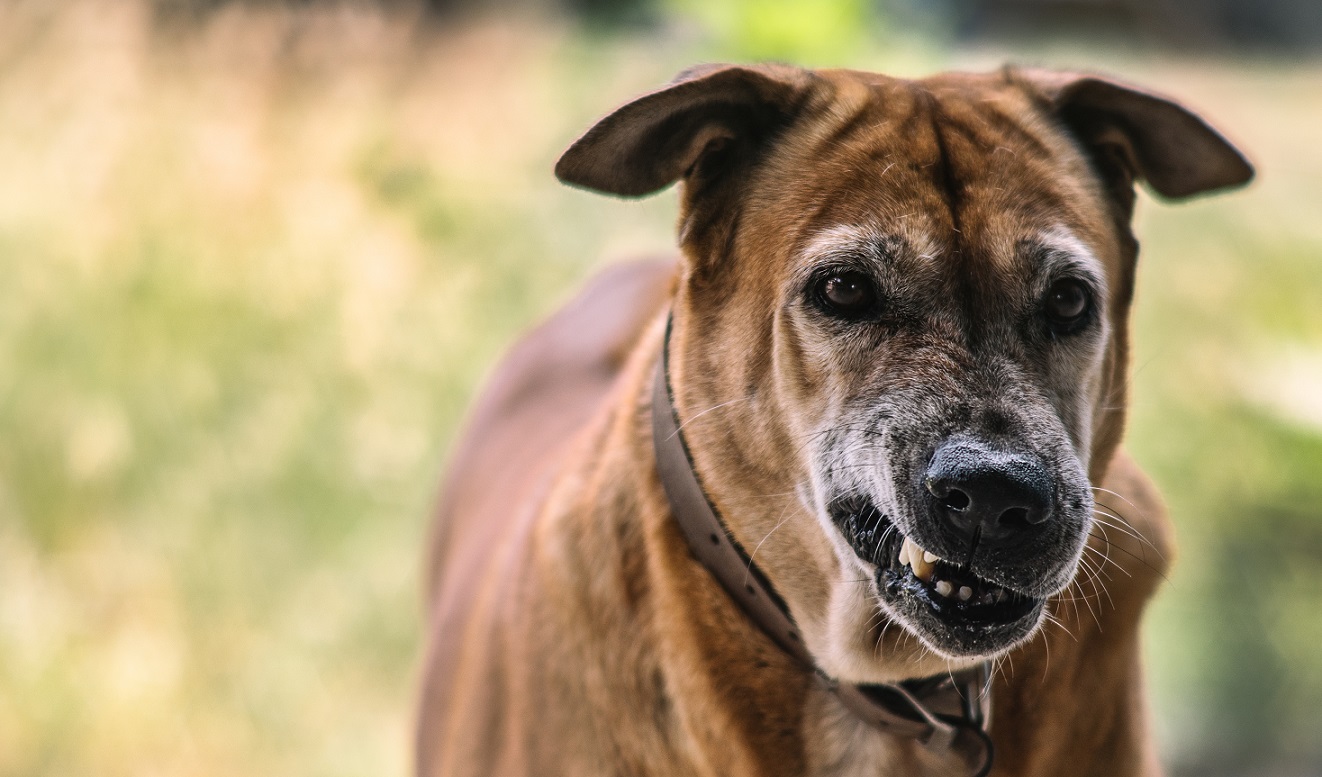
How to Tackle Sudden Aggression In Dogs Once and For All
Aggression is a major problem. Don’t be tempted to wait it out to see if it corrects itself.
Without intervention, even minor bouts of aggression can quickly turn into something more dangerous.
The first step in tackling the problem is to figure out exactly what’s causing it in the first place.
Launching into a new training routine before you identify the cause of the problem is asking for trouble.
After all, if your dog’s aggression stems from a medical problem, no amount of behavioral modification or training is going to help.
Once you figure out the reason for your dog’s sudden aggression, you can start addressing it. But before that, a word of advice.
Regardless of what solution you implement, a tense, agitated dog isn’t going to respond to your training as well as a calm, focused dog.
Remember the Dog Calming Code I mentioned earlier? Now’s the time to take a look.
If you can teach your dog how to rein in their emotions, stay calm, and listen to your instructions, you’re one step closer to a well-behaved, well-mannered dog.
Once you’ve implemented the training into your routine, you can start moving forward with the following solutions.
Speak to Your Vet
If your dog’s aggression has arisen out of the blue, or if it’s accompanied by any other worrying physical or temperamental changes. Rule out the possibility of a medical problem or injury before anything else.
Start with a cursory physical exam to check for signs of injury. If your dog has any insect stings, tender spots, swelling, or cuts, it could be hurting them enough to cause aggression.
If you can safely look inside your dog’s mouth, check for any signs of a foreign object such as food, a toy, or a stick.
Only do this if you’re confident your dog won’t snap at you: in case of any doubt, leave it to your vet.
If you can’t find any obvious signs of a physical injury, make a note of any other symptoms such as appetite changes, lethargy, hair loss, etc, to share with your vet.
If a physical problem is identified, your vet will discuss the next steps with you.
If they believe the problem is rooted in anxiety rather than illness, they may recommend anti-anxiety medication.
Control Their Environment
While you’re working to address your dog’s aggression, control their environment as much as possible.
Reduce their exposure to any potential triggers. Avoid leaving them unattended, and keep them leashed during walks or visits to the park.
Try to keep things as quiet, calm, and routine as possible: any further changes or added stress will simply exacerbate the problem.
By treating your dog as kindly as possible and reducing their exposure to scary or triggering situations, you can lessen the risk of them lashing out.
Learn To Spot The Signs
Learning canine body language won’t treat the root cause of your dog’s aggression, but it’ll go a long way to keeping both you and them safe.
Before a dog bites or engages in any other aggressive behavior, they’ll usually let you know they’re not happy.
By learning to spot the warning signs of impending aggression, you can work to de-escalate the tension before it erupts into violence.
When a dog starts to feel threatened or unhappy, its body language changes. Watch out for signs such as:
- Wrinkled muzzle
- Stiff, rigid posture
- A fixed gaze
- Pulsating tail
- Bared teeth and gums
Once you spot the signs, stop whatever it is that you’re doing.
Keep your body language relaxed and lower your tone. Don’t reach out to soothe or pet them: they won’t appreciate it.
Similarly, don’t try to remove any toys or food from them at this stage – wait until they calm down and have moved into another room before you take it away.
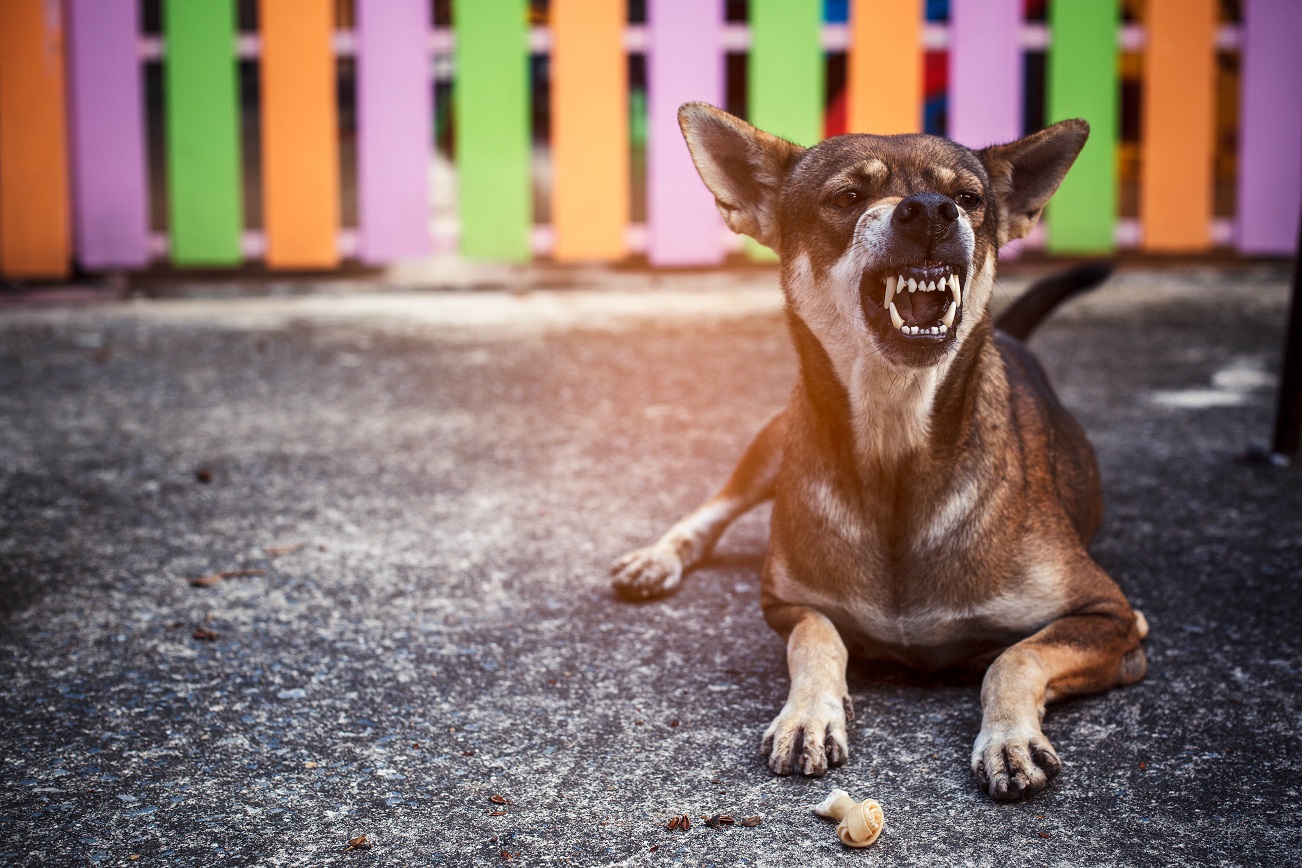
Lead By Example
If a dog gets aggressive in an attempt to assert its dominance, it’s tempting to react in kind. Don’t.
Getting physical with a dominant dog will only make them intensify their behavior. Heaping aggression on top of aggression simply leads to more aggression.
If your dog’s behavior has arisen out-of-the-blue, they’re probably no happier about the situation than you are. Stay calm and treat your dog with kindness.
Avoid retaliating or punishing your dog for bad behavior. Like it or not, you’re setting them an example in everything you do – make sure it’s a good one.
Make Time For Exercise
If your dog isn’t provided with adequate mental and physical stimulation, they can become frustrated, bored, and temperamental.
A couple of leashed walks a day might be enough for some dogs, but others will need more.
Aim to wear them out with games and other activities that stimulate their minds and bodies.
It may sound simplistic, but a tired dog really is a happy dog.
Establish Yourself as the Leader
Getting your dog to listen to your commands if they don’t respect you as a leader is an uphill struggle.
Set a foundation of boundaries and obedience to earn their respect. Body language, consistency, and training are all key to success.
By implementing the exercises from the Dog Calming Code into your routine, you’ll teach your dog to see you as a leader.
In turn, this will reduce frustration and improve impulse control and calmness.
Be consistent with the training: if your dog knows you aren’t going to enforce a rule or command, they’ll be less inclined to listen.
By accompanying commands with consistent follow-through, you’ll teach your dog what to expect.
Just remember that ‘follow-through’ doesn’t mean shouting or using other displays of force: calmness and patience are crucial.
Final Thoughts
If your dog has started acting aggressively, the sooner you can nip the problem in the bud, the better.
Ultimately, this isn’t a problem that’s going to go away on its own. Unless you take action now, it’s only going to get worse.
Before anything else, rule out a medical problem. If your vet gives you the all-clear, you can start working on behavior modification techniques and strategies to manage the situation.
Tackling the root cause of aggression can be challenging. Don’t expect the problem to magically disappear overnight. This is going to take hard work and discipline.
But don’t give up.
Providing you’re calm, consistent, and keep your dog’s best interests in mind, very few problems can’t be managed.
